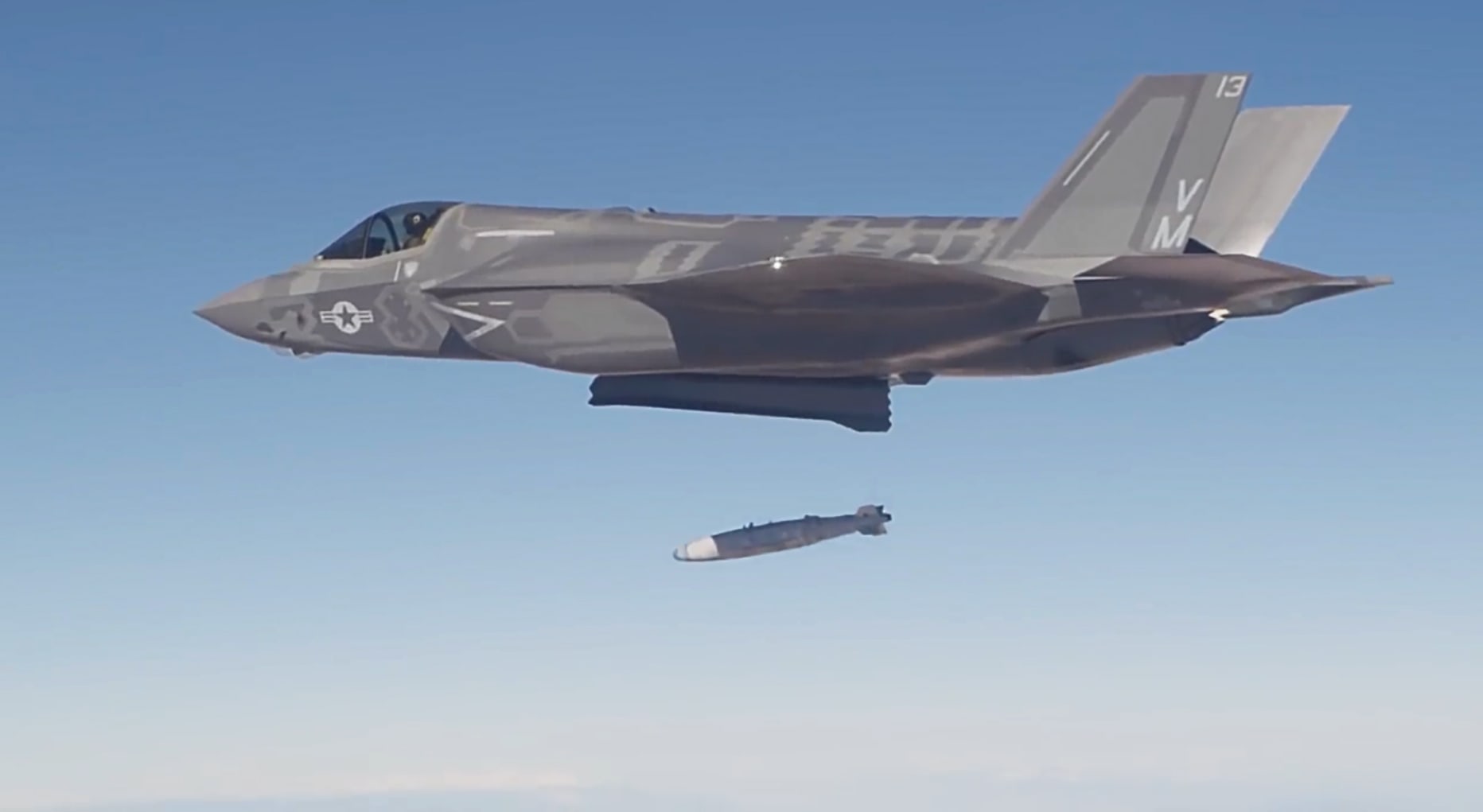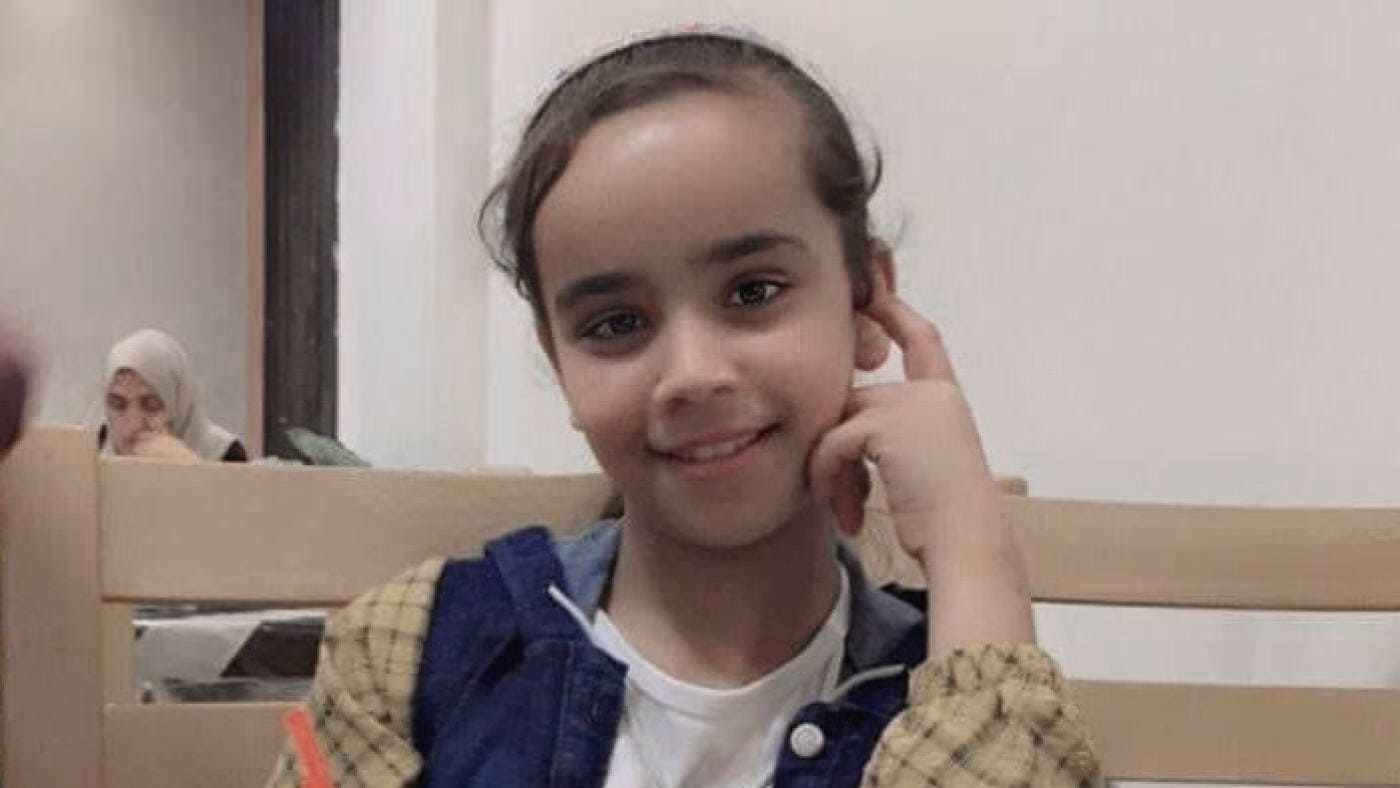
This is the story of a Danish export venture. It is also the story of a 5-year-old girl killed in the streets of Gaza. And the story of 36 F-35 fighter aircraft loaded with Danish hardware.
The first of the fighter aircraft arrived in Israel on a December morning in 2016 and was quickly nicknamed Adir, ‘Mighty One’. A few years later, Israel became the first country outside of the US to put the super-advanced fighter aircraft into service.
Attached underneath the wings of the new aircraft is the result of a Danish industrial offensive: six high-tech pylons, developed and produced in Eastern Jutland, that hold and drop the aircraft’s external bombs. And this is just one of 80 Danish parts developed for the F-35 fighter aircraft.
But there is a price to pay for being an arms-producing nation.
Today, Danwatch, in collaboration with the newspaper Dagbladet Information and Lighthouse Reports, reveals that in 2021 and 2022, Danish-equipped F-35 fighter aircraft participated in bombing campaigns over Gaza that have cost the lives of more than a hundred civilians. 75 of them were children.
The Israeli military will not disclose which bombs were dropped by the F-35 fighter aircraft, but we managed to identify two days when the fighter aircraft were in the air during operations over Gaza.
To find out what happened during those two days, we scrutinised the Israeli military social media, operations reports, local news reports, Danish and American arms manufacturers’ PR material, as well as photo and video footage from bombing raids and satellite maps.
This is the story of those two days, of bombing raids, of civilian casualties and of Danish-equipped fighter aircraft.
11 May 2021
It is early in the morning on 11 May 2021, in an apartment on the sixth floor in northern Gaza. It’s Ramadan and the Subuh family has gathered for suhoor, the meal before sunrise and the daily fast. Amira Subuh tells her son Baraa to go back to bed and goes to her own room, where she sleeps with her other son ‘Abd a-Rahman, who suffers from cerebral palsy.
This is the last time they speak.
Meanwhile, around 80 Israeli fighter aircraft and drones are preparing to take off towards northern Gaza. An operations report reveals that eight of the Danish-equipped F-35s are among those participating in the operation that day. Their goal is to cause extensive harm to the militant Hamas resistance movement.
Over the next few hours, fighter aircraft and drones attack 130 targets. One of the targets is a Hamas battalion commander who, according to Israeli intelligence, is staying in an apartment in northern Gaza, close to the Mediterranean Sea.
Somewhere in the airspace, a crosshair is aimed at the building where the Hamas commander is believed to be. A bomb is dropped. Black smoke billows. Mission completed.
Later that morning, the Israeli air force posts a video on Twitter showing footage of the attack. They are confident that they have hit their target.
But on the ground, the reality is different.
Using satellite imagery, Danwatch located the building that was bombed in the video.
The residential block is located in Al Shati’, a refugee camp in northern Gaza. This is where Amira Subuh and her disabled son are lying in their beds in their sixth-floor apartment.
Outside on the street, Amira Subuh’s third son, Mu’az Subuh, is heading towards his mother’s home after morning prayers. He is about 50 metres from the white building when all hell breaks loose.
Mu’az hears a loud explosion and smoke and dust spread everywhere. People start shouting. He tries to enter the building, but people in the street hold him back. He looks up and sees that the sixth and seventh floors have collapsed.
“I lost all hope that my family was alive,” he tells the human rights organisation B’tselem.
The apartment that was bombed on 11 May 2021. Photo from @qudsn on Twitter.
Upstairs in the apartment, Amira Subuh’s other son and Mu’az’s younger brother, Baraa Subuh, was falling asleep when “the house suddenly collapsed” on him. Everything turns black, but he manages to dig himself free and starts searching for his mother and his disabled brother who had been sleeping in the room next to him.
It takes a long time to dig them out of the rubble. But by then it is too late. “They are gone and so is our home where we had a good life together,” Baraa tells B’tselem.
Amira Subuh and her disabled son Abdul-Rahman Subuh, 19, were killed in the attack. Private photo via B’tselem.
Meanwhile, the real target of the attack, the Hamas battalion commander, was unharmed.
Although he lived on the seventh floor in the apartment above the Subuh family, he was not at home that morning and was therefore not injured during the bombing. This was confirmed by the Palestinian human rights organisation Mezan and the Israeli human rights organisation B’tselem.
We do not know which aircraft dropped the bomb on Amira and her son, but we have evidence that the Danish-equipped fighter aircraft were participating in the air strikes on northern Gaza on the same day that the two civilians were killed. And they were just some of the first civilian victims of the May 2021 bombing campaign that Israel named Operation Guardian of the Walls.
Over the next 11 days, the Israeli Air Force bombs more than 1,500 targets in one of the world’s most densely populated areas. And Danish-equipped fighter aircraft participated in the operation.
130 Palestinian civilians lost their lives, 67 of them were children.
Human Rights Watch believes that Israel has committed a number of potential war crimes during this operation as not enough is was done to avoid civilian casualties. According to the human rights organisation, at least 62 Palestinian civilians were killed by Israeli attacks, without a military target in close proximity.
In a written response to Danwatch and Information, the Israeli Defence Force (IDF) confirm that the Danish-equipped F-35s, or Adir as they are called, were part of the 11-day bombing campaign.
“The Adir aircraft were part of the Israeli Air Force’s fighter aircraft capability and participated in ‘Operation Guardian of the Walls'”, an IDF spokesperson wrote.
The Israeli military have informed Danwatch and Information that the attack in which Amira Subuh and her son were killed is under investigation, but they do not wish to comment further on the incident.
The Israeli military states that they only bomb military targets and that they otherwise “take every possible precaution to minimise civilian casualties during operations in the densely populated area”.
Yet civilians, including eight children, die in an Israeli bombing campaign just one year later. But before we come to that, we must go back 20 years in time to an airport northeast of Paris.
On 17 June 2003, the large arms fair, Paris Airshow, had already been taking place for two days at Le Bourget Airport when a decisive moment for the Danish arms trade occurred. At the pavilion of fighter aircraft manufacturer Lockheed Martin at stand A-399, preparations were made for a ceremony. At around 2 pm, a man named Tom Burbage signs his name on an important document.
At the time, Tom Burbage was the Executive Vice President of Lockheed Martin, and the document included an agreement with the Danish defence company Terma to supply parts for the F-35 fighter aircraft that were being development to become state-of-the-art.
In 2023, 20 years later, producing fighter aircraft is a billion-dollar business for the Danish defence industry. Here you can see some of the main parts that Danish companies have supplied for the aircraft.

Terma is Denmark’s largest defence company and the main supplier to the F-35s. Last year, deliveries for the fighter aircraft generated a turnover for Terma of just over 1 billion DKK. Terma currently employs more than 800 people to produce parts for F-35s alone. More than 700 F-35s with Terma parts have already been delivered and more than 3,000 are in the pipeline, according to the company.
Terma says it supplies around 80 parts for the fighter aircraft, but it is the equipment on the underside of the aircraft that is particularly noteworthy. On each wing are two pylons – a kind of weapon station – used to transport and launch bombs and missiles during military operations.
Photo: Israeli Air Force IAF on Facebook. Graphic by Danwatch.








Lockheed Martin have confirmed to Danwatch, Information and Lighthouse Reports that all F-35s have a number of components from Terma – including the weapon stations.
Military experts consider all of the parts supplied by Terma as essential for the aircraft’s use in military operations.
This Danish export venture has only been possible because successive Danish governments have given it top priority for the country’s defence and security policy.
According to the same Danish authorities, observing human rights and international law is vital when exporting Danish arms and military equipment. For this reason the Ministry of Foreign Affairs has traditionally been against allowing military export from Denmark to Israel. The risk of the equipment being used for serious human rights violations is far too high.
However, Terma’s exports are made possible by Denmark’s participation in the US-led defence cooperation on the F-35 aircraft, where the Danish parts are first sent to Lockheed Martin in the US.
And Foreign Minister Lars Løkke Rasmussen (M) is now proposing to take further advantage of this circumvention.
Arab Emirates, whose militaries have been responsible for human rights violations and the killing of civilians.
“It is possible to be a country that is problematic from our standpoint and still have some legitimate security policy interests,” he told the Danish newspaper Politiken.
At the same time, he mentioned that the government will relax its stance on the resale of arms to and from the US when they are part of international cooperation projects.
Denmark will not “stand guard” over what the products are ultimately used for, was the message from the foreign minister.
The potential consequences of this approach can be seen on a summers day in 2022 in Gaza.
5 August 2022
On the afternoon of 5 August 2022, 5-year-old Alaa Qaddoum takes to the street to escape the stifling heat caused by the power outage inside. Out on the street in the neighbourhood of Shujaiya in Gaza City, she is greeted by sunshine from a cloudless sky, the temperature has crept well above 30 degrees.
50 kilometres further inland at Nevatim Air Base, pilots from Israel’s Golden Eagles squadron are preparing the Danish-equipped F-35 fighter aircraft for take-off. The pilots were off duty, but earlier in the day they were suddenly told to report to the base.
A little after 4 pm, Alaa plays with her 7-year-old older brother outside the local mosque, where people are gathering for the afternoon prayers.
Meanwhile, the F-35 fighter aircraft have taken to the skies. Together with other aircraft and drones, they launch a surprise bombardment of the Palestinian enclave.
“At 4.15 pm we were in the middle of the operation,” an Israeli F-35 pilot recounts a few days later in a TV report about the operation on an Israeli news broadcast:
The whole thing takes only 170 seconds. The pilots home in on the target, drop the bombs, and the explosions turn the sky grey. The bombs fall over Gaza in a coordinated attack. Four to five tremendous blasts are heard as the seventh floor of a high-rise building in Gaza City is bombed.
From the F-35 fighter jets, the pilots can look down on Gaza, one of the most densely populated areas in the world with 2 million inhabitants, an area the size of Langeland.
“In Gaza, you are never happy to have to attack”, says one of the F-35 pilots subsequently on Israeli television, who has chosen to conceal his identity.
“You tell yourself: I have to be precise in my work and not make any mistakes. This is the last place in the world where you can make a mistake”.
While these thoughts cross the minds of the pilots above Gaza, Alaa Qaddoum, unaware, is playing at the mosque. At approximately 4.15 pm, an Israeli missile hits a member of the Palestinian militant group Islamic Jihad who is at the mosque.
Alaa Qaddoum’s father, Abdullah Qaddoum, who according to the Israeli military is a member of Islamic Jihad, is also part of the target, the Israeli military explain to Danwatch. But it is his 5-year-old daughter who is killed.
Shrapnel hits Alaa Qaddoum in the chest, leg and forehead. She dies instantly. The Israeli military tells Danwatch they regret that it is Alaa Qaddoum and not her father that they ended up killing.
“Unfortunately, the reports after the attack indicated that one unfortunate victim was his daughter, who was in his vicinity during the attack. The incident is being investigated by the General Staff Fact-Finding and Assessment Mechanism”, the IDF writes.
Whether it was an F-35, another fighter aircraft or a drone that killed Alaa Qaddoum remains unknown, but she was to be the first of several children.
These surprise attacks were the start of Israel’s ‘Operation Breaking Dawn’, a three-day operation in which at least 32 Palestinians are killed by Israeli air strikes. Eight of the victims are children.








Two days after the surprise attack, a funeral procession moves slowly through the streets of Gaza. Alaa’s grandfather leads the way with Alaa’s dead body in his arms, wrapped in the Palestinian flag. Behind him, in a slow procession hundreds of men follow with blank stares.
We cannot say for sure which bombs were dropped by Danish-equipped bombers.
But we have evidence that, despite Denmark’s restrictive policy, fighter aircraft equipped with advanced Danish military technology have participated in bombing raids on Gaza on days and at times when civilians, including children, have been killed.
The Israeli Defence Force (IDF) confirmed to Danwatch and Information that the F-35 aircraft participated in Operation Breaking Dawn in August 2022.
“The protection of human life is a core value, including during armed conflict”, writes the IDF spokesperson.
The photographs show Alaa Qaddoum, the t-shirt she died in and her empty room. Photo: Samar Abu Elouf/Middle East Eye
Foreign Minister Lars Løkke Rasmussen has declined to be interviewed about the participation of Danish-equipped fighter aircraft in bombing operations in Gaza.
In a written response, the Ministry of Foreign Affairs stated that “the risk of equipment being used for human rights violations” is normally “a key parameter” in the assessment of applications for authorisation to export arms and military equipment. However, following a change in practice in 2000, the ministry does not carry out such assessments when it comes to “exports of sub-components for projects carried out in cooperation with EU and NATO countries”, the ministry explains.
“This also includes exports to the F-35 cooperation, which is led by the United States,” the Ministry of Foreign Affairs writes.
Defence company Terma did not want to speak with us either.
In a brief email to Danwatch and Information, Terma wrote that their exports are open and transparent and in full compliance with Danish legislation.
“At Terma, we are happy and proud to be part of the F-35 programme – and thereby make a significant contribution to Denmark’s important alliance with the US and other countries”, writes Terma’s Press Officer Sara Westphal Emborg Neergaard.
In light of the revelation that Danish aircraft parts could potentially be used for war crimes in Gaza, human rights organisations Amnesty International and Human Rights Watch are now calling on Denmark to stop deliveries for the Israeli fighter aircraft.
At the same time, a number of experts in international law and human rights warn that Denmark risks contributing to war crimes and believe that the exports are in violation of the UN Arms Trade Treaty, EU rules on arms exports and general international law.
Read about it here:
No posts
FACTS